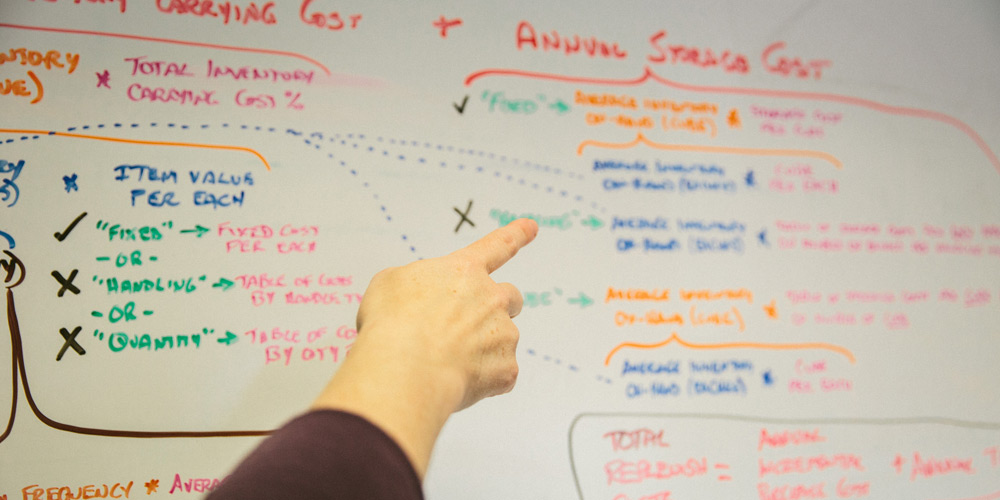Common Use Doesn’t Mean Common Knowledge
You’ve likely heard the term project management or project manager many times throughout your career. This is a common function and role in many organizations and industries across the world. Whether project management is a core component of your professional duties as a manager, director, or executive, or you’re interacting with project managers on a daily basis, this area of focus is responsible for achieving the milestones and completing the tasks that move organizations forward.
You may also be aware of the Project Management Institute — a governing body that provides education and certification on project management. What is less known is that the term project management has specific meaning and is just one of a few disciplines PMI supports. The others are program management and portfolio management. While they sound similar, the difference between project, program, and portfolio management is significant in purpose, scope, and benefit.
Project Management
According to PMI, project management is “a temporary endeavor undertaken to create a unique product, service or result.” Pretty simple, right? Any project manager would readily disagree that it’s simple. That’s because there are a variety of operations and factors involved with projects along with a defined process that collectively determines the success of the project.
An example might be launching a new CRM system for a distribution services company. There would be a discovery process to determine if an existing platform can be used out of the box or should be customized (e.g., Salesforce, Microsoft Dynamics, etc.), or a new tool built from scratch. From there, a team would be involved in a variety of tasks, such as process design, development, workflow, testing, and more. Then, an implementation team would manage the tasks associated with launching and deploying the software and monitoring its use and efficiency for a set time, making adjustments as needed until the software was optimized and adopted.
Along the way, a project manager would follow the process of initiation, planning, execution, monitoring, and closing to ensure the project is completed with a focus of “on time and on budget.” While this is a specific example of a project, launching a CRM would likely be part of a greater initiative to achieve business benefit such as cost reduction or increased operational efficiency.
This is a key difference between project, program, and portfolio management: scope — and it’s often where the realm of project management ends, and program management begins.
Program Management
While project management oversees the work of individuals and teams to achieve a specific result, a program consists of several or many projects that collectively produce business value in support of an organization’s strategy. Building on the example above, let’s say the focus of a program at that same company is to improve customer relations and operational efficiency. Here, a program manager might have oversight of the CRM project manager as well as project managers working on other related projects to produce results that support this initiative and collectively drive measurable improvement.
For example, while sales and marketing will make use of the CRM, work still needs to be done in other functions. A new sales organizational approach may be needed to coordinate a newly segmented customer base. Like the CRM, where the organizational and process work may be directed by a non-IT function, this requires discovery, planning, execution, testing, monitoring, and more — all under the oversight of perhaps a different project manager. But this capability and the CRM tool are not independent of one another.
For true efficiency, these projects would need to synchronize or collaborate with one another. Customer information captured from sales, marketing promotions, and other data should be available to back-office employees, so they’re prepared ahead of the customer interaction. Program management would plan for this by looking at the gaps between these two projects and other adjacent projects to find the dependencies and connections that tie them together. Then, the program manager would support the project managers by keeping them on target and coordinated in respect to the business value of customer focus and improving operational efficiency.
A final difference between project and program — particularly at the program level — is the understanding that program management offers benefits that can’t be realized from managing projects individually. In our example, program manager oversight creates unity between CRM project managers and sales organization management project managers. That unity aligns teams and resources for the shared goal of improved efficiency. There may even be a subprogram under this program to streamline accounting practices and another for vendor usage. Together, these projects generate a greater benefit when managed at the program level than if they were managed individually.
Portfolio Management
But just as a project is a component of change that, along with other projects, can and should be unified under the direction of program management, so too can multiple related programs be unified for a still greater purpose. Most companies do not have unlimited resources to implement all desired business beneficial programs or projects. This rests with portfolio management, under which projects and programs are focused and honed to help an organization achieve its strategy. Let’s continue with Example Company, Inc.
We know that Example Company, Inc. (ECI) has an overarching strategy for profitable revenue growth. But how can it make the most progress and have the greatest impact toward that goal in a world of limited resources? ECI needs to develop and align a portfolio of programs with the strategic initiatives required to achieve their intended goal. This will require them to balance service objectives, cost constraints, and capital investments with the timing and interactions required to achieve their desires. Portfolio management helps to achieve the organization’s goal by providing high-level, centralized oversight and guidance for the company’s programs and the projects within them.
Hopefully, we’ve cleared up the difference between project, program, and portfolio management for you. And while we’ve explored their uses and purposes at all levels of ECI, there’s one last thing that ties them all together. One last thing that can rattle the bones of project, program, and portfolio managers alike if asked without an answer.
What’s the Business Value?
Ideally, no project, program, or portfolio manager would undertake their respective workload without having an understanding of how it delivers value to the business beyond the more common metrics of getting work done within budget, on time, and at a high-quality level. And no executive team will fund such efforts. But all too often, those become the only metrics used and tracked.
It’s important to understand that projects are about attaining a goal. They may not have the metrics associated with them — metrics that can only be realized at the program level. For larger efforts that cross functional organizations or business lines, often trackable business impact metrics as well as resultant and process metrics can only be maintained, measured, and tracked at a program level. This is because those metrics address the between-process “whitespace” work: the things project managers and others involved may not be monitoring.
In the end, the difference between project, program, and portfolio management includes a distinction between their operational and strategic focuses, but each also has a specific role to play in how they deliver business value. And if the focus isn’t on the business value received from them, then there is no value.
If this is something your organization is struggling with or considering implementing, we’d love to learn more about it.




















